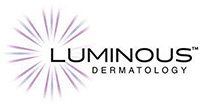PRP / Hair Restoration Q & A
What is platelet-rich plasma?
Platelet-rich plasma, or PRP, for hair loss is a treatment that uses a patient’s own blood to regenerate hair growth. This well-established therapy has been used to treat various orthopedic conditions and sports injuries for years. More recently, this technique has gained popularity in aesthetic medicine. You may have heard of PRP from its skin-rejuvenating role in the Vampire Facial Kim Kardashian made famous.
PRP comes from your own blood, which your provider at Luminous Dermatology collects in a simple blood draw. This small blood sample will be processed in a centrifuge isolating the PRP enriched cells.
Your provider will then injects the PRP into the affected areas of your scalp with tiny needles. Since PRP consists of essential proteins created by your own body, there’s little to no risk of adverse reactions or side effects, such as those you may experience from medications that treat hair loss.
How does PRP treat hair loss?
Platelet-rich Plasma injections contain your body’s own growth factors that have been shown to stimulate and enhance hair follicle production. Just as PRP rejuvenates your skin in a Vampire Facial, or promotes healing an injured joint, it restores natural hair growth function when injected into your scalp.
How effective is PRP at restoring lost hair?
Several clinical research studies conclude that PRP is a simple, safe, and cost-effective treatment for hair loss. The Journal of Cutaneous and Aesthetic Surgery published a study that found significant improvement in hair regrowth among many patients with various types of hair loss.
The patients in this study still showed positive results at a six-month follow-up, which suggests that PRP treatments are a smart investment for long-acting hair regrowth.
What can I expect from a PRP hair rejuvenation treatment?
First, the team at Luminous Dermatology evaluates your scalp and hair during an initial consultation. Then, they work with you to develop a customized hair restoration treatment plan. This varies depending on your unique needs, but most patients require several treatment sessions spaced four weeks apart.
To enhance your comfort, your provider may apply a topical anesthetic or recommend pain medications before they inject PRP into your scalp.
You may notice improvements shortly after your treatment, but optimal results typically occur after two or three treatments.
To discover how PRP can restore your thick, healthy head of hair, call or book an appointment online using the convenient scheduling tool today.


